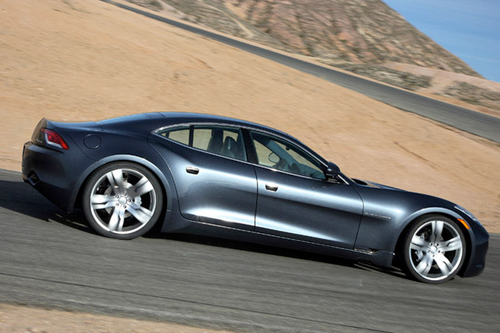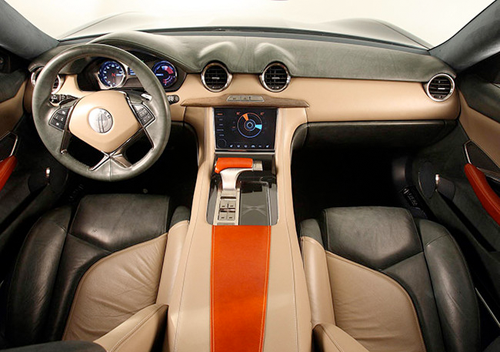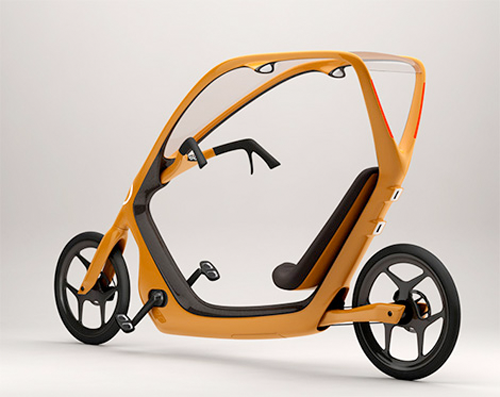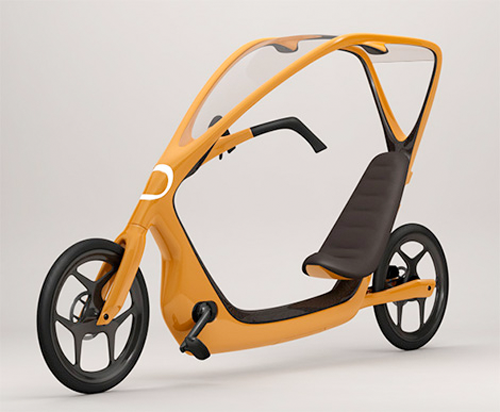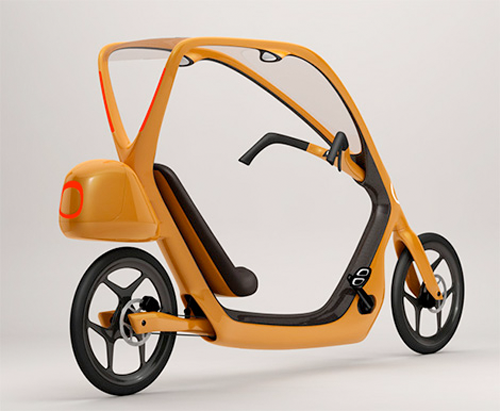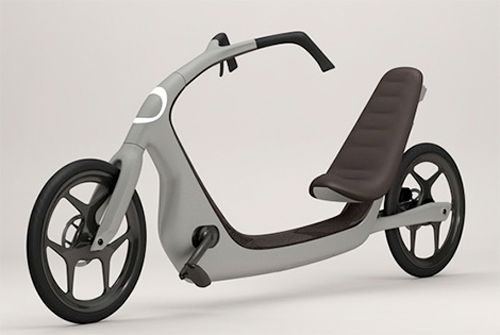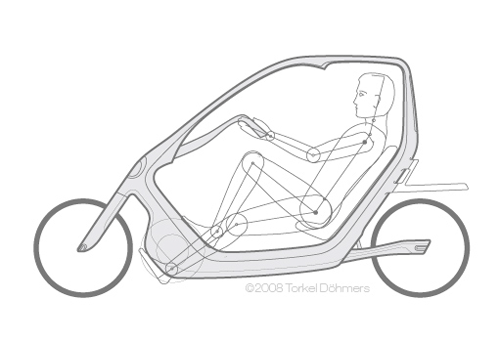Two wheels good. Four wheels bad.
we’ve been visiting the chicago auto show and applaud the very green push. we also just posted an electric scooter article that was not intended to be a wheel count poke. that said, here’s a thoughtful story on the merits of riding one’s bike . via the guardian [RK]
Yellow cab goes green in chicago.
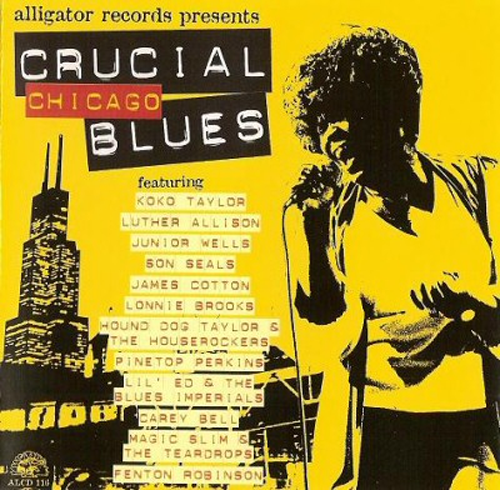 chicago loves the blues. now yellow goes green.
chicago loves the blues. now yellow goes green.
chicago is honoring a commitment made years ago to have a greener taxi. yellow is the first. yellow group plans an initial deployment of 100 new CNG taxis under its yellow cab subsidiary, which it says is america’s oldest and largest continuously operating taxi fleet.
Read more about CNG and how solar and wind are feeling the heat.
Resources:
what is cng?
inhabitat
chicago tribune
yellow goes green in dallas
green tech: solar / wind feel heat from cng
environmental leader
cleancngvehicles.org
cng industry
Tesla S unveiled.
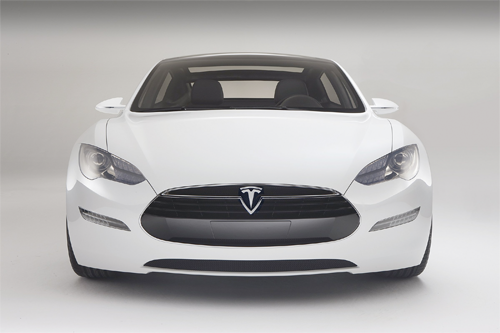 Tesla has LeftlaneNews streaming the unveiling of the new
Tesla has LeftlaneNews streaming the unveiling of the new
Tesla S.
above and two photos below: leaked images not officially streamed

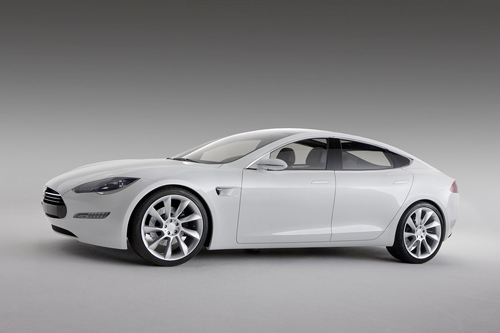
below: live – streamed images at the unveiling
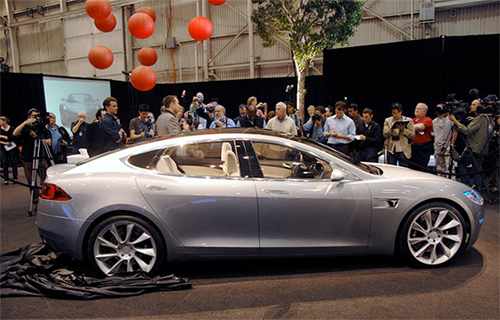
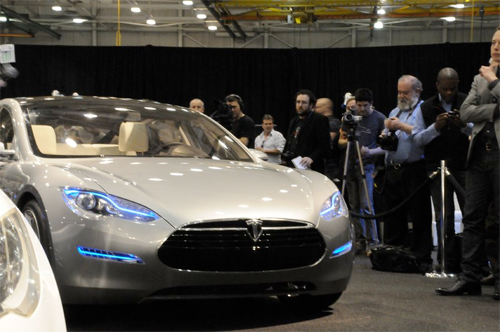
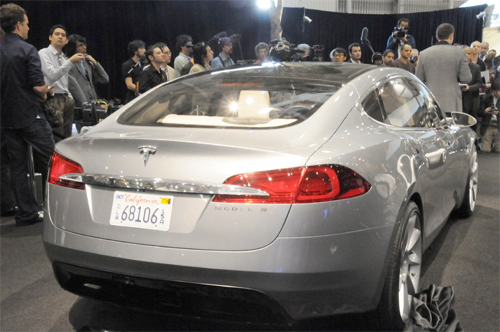
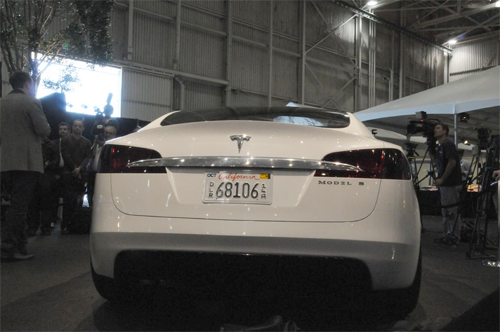
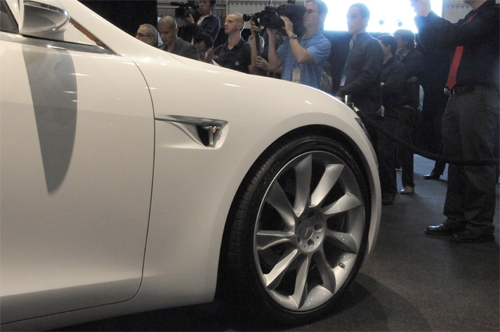

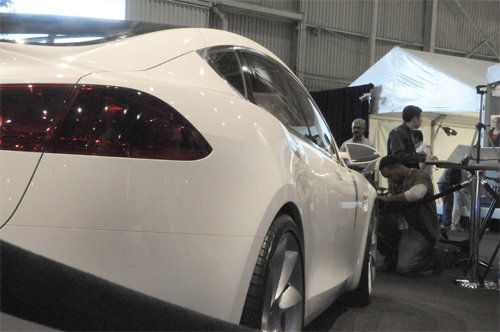
below: unsure where these were taken. grill a study?
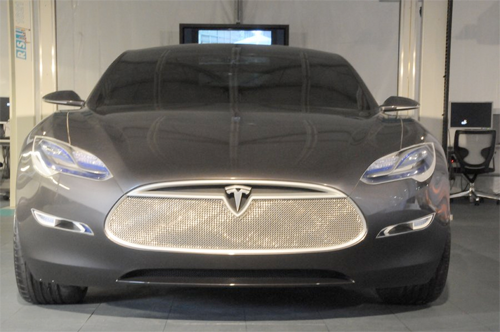
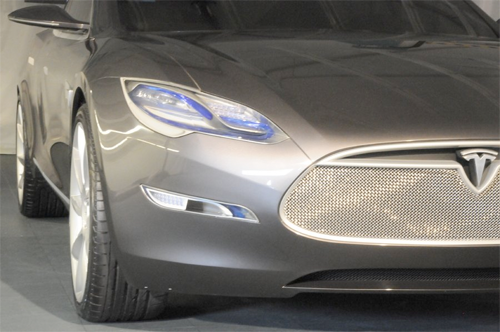
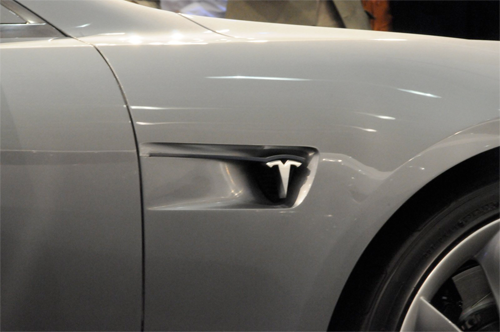
below: via treehugger
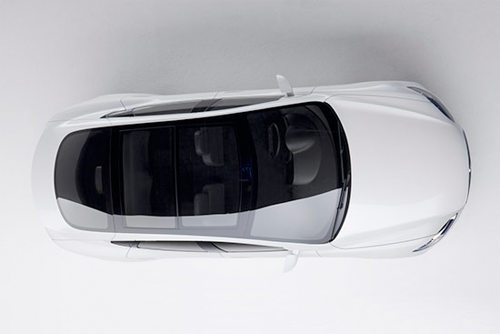
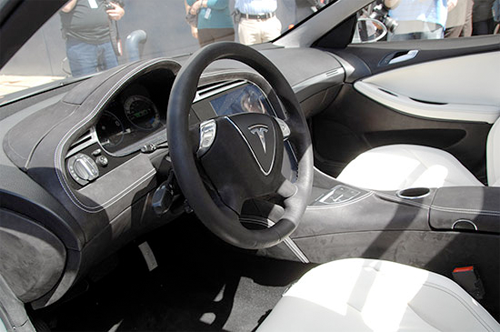
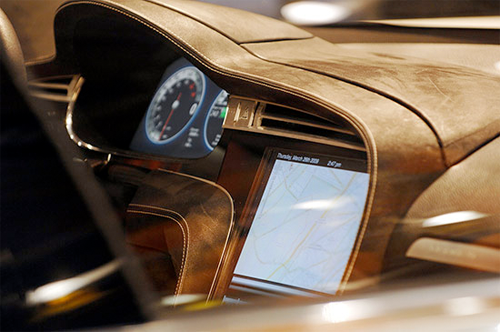
below: tesla product line
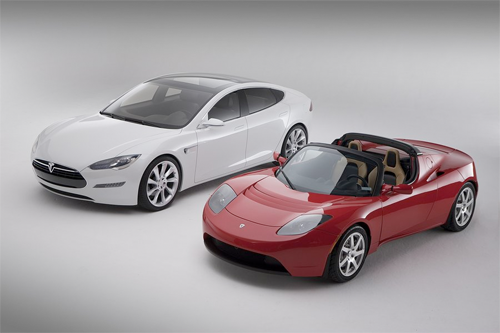
below: leaked. we really don’t know anything about this photo
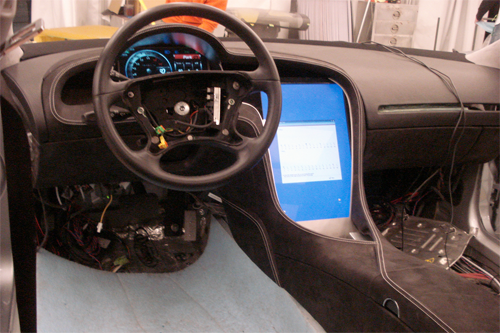
Following an earlier photo leak, Tesla has officially taken the wraps off its Model S. The Model S follows in the footsteps of the Fisker Karma, offering a sleek four-door sedan with eco-friendly operation. The Model S will be Tesla’s second model, joining the Roadster sports car.
LeftlaneNews adds “Although the Model S’ styling is show-stopping, its interior is just as awe-inspiring. You can clearly see the Model S’ center stack is made up of what looks to be a touch screen interface. Presumably the screen will house all radio, navigation and HVAC controls, which would make for a highly customizable car.”
Elon Musk’s newsletter written 3/27, to Jason Calacanis—
Just moments ago, we took the wraps off the Model S, an all electric family sedan that carries seven people and travels 300 miles per charge. We also launched a web site and began taking orders for this historic vehicle, which will likely be world’s first mass-produced, highway-capable EV.
The Model S, which carries its charger onboard, can be recharged from any 120V, 240V or 480V outlet, with the latter taking only 45 minutes. By recharging their car while they stop for a meal, drivers can go from LA to New York in approximately the same time as a gasoline car. Moreover, the floor-mounted battery pack is designed to be changed out in less time than it takes to fill a gas tank, allowing for the possibility of battery-pack swap stations.
The floor-mounted powertrain also results in unparalleled cargo room and versatility, as the volume under the front hood becomes a second trunk. Combining that with a four-bar linkage hatchback rear trunk and flat folding rear seats, the Model S can accommodate a 50-inch television, mountain bike *and* surfboard simultaneously. This packaging efficiency gives the Model S more trunk space than any other sedan on the market and more than most SUVs.
“Model S doesn’t compromise on performance, efficiency or utility — it’s truly the only car you need,” said Tesla CEO, Chairman and Product Architect Elon Musk. “Tesla is relentlessly driving down the cost of electric vehicle technology, and this is just the first of many mainstream cars we’re developing.”
Tesla expects to start Model S production in late 2011. The company believes it is close to receiving $350 million in federal loans to build the Model S assembly plant in California from the Dept of Energy’s Advanced Technology Vehicle Manufacturing Program.
Building on Proven Technology
Tesla is the only production automaker already selling highway-capable EVs in North America or Europe. With 0-60 mph in 3.9 seconds, the Roadster outperforms almost all sports cars in its class yet is six times as energy efficient as gas guzzlers and delivers 244 miles per charge. Tesla has delivered nearly 300 Roadsters, and nearly 1,000 more customers are on the waitlist.
Teslas do not require routine oil changes, and they have far fewer moving (and breakable) parts than internal combustion engine vehicles. They qualify for federal and state tax credits, rebates, sales tax exemptions, free parking, commuter-lane passes and other perks. Model S costs roughly $5 to drive 230 miles – a bargain even if gasoline were $1 per gallon.
The anticipated base price of the Model S is $49,900 after a federal tax credit of $7,500. The company has not released options pricing. Three battery pack choices will offer a range of 160, 230 or 300 miles per charge.
But the anticipated sticker price doesn’t tell the full story. Model S costs half as much as a Roadster, and it’s a better value than much cheaper cars. The ownership cost of Model S, if you were to lease and then account for the much lower cost of electricity vs. gasoline at a likely future cost of $4 per gallon, is similar to a gasoline car with a sticker price of about $35,000. That’s why we’re positive this car will be the preferred choice of savvy consumers.
The standard Model S does 0-60 mph in under six seconds and will have an electronically limited top speed of 130 mph, with sport versions expected to achieve 0-60 mph acceleration well below five seconds. A single-speed gearbox delivers effortless acceleration and responsive handling. A 17-inch touchscreen with in-car 3G connectivity allows passengers to listen to Pandora Radio or consult Google Maps, or check their state of charge remotely from their iPhone or laptop.
Tesla is taking reservations online and at showrooms in California. Tesla will open a store in Chicago this spring and plans to open stores in London, New York, Miami, Seattle, Washington DC and Munich later this year.
We’re certain you’ll be hearing a lot more about Tesla in the weeks and months ahead, and we look forward to seeing you at the stores we’re opening soon! [link]
below: jason calacanis parks his tesla at free electric parking at LAX ( more )
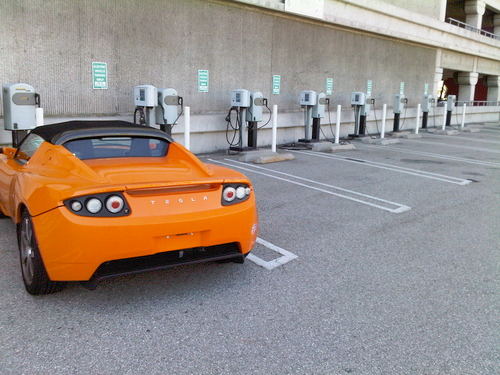
[tesla motors] [leftlanenews] [link] [link]
Fiskar Karma. Ready to go plug-ins.
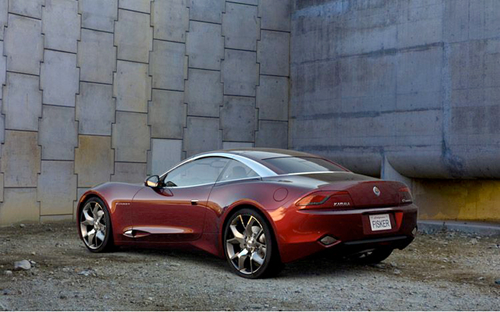
While we wait for “plug-in” Volt and Prius to arrive in 2010 there are two exotic automakers ready to go. Tesla ( $128,000 USD two-seater ) and Karma ( $87,900 USD ) Let’s look at Karma.

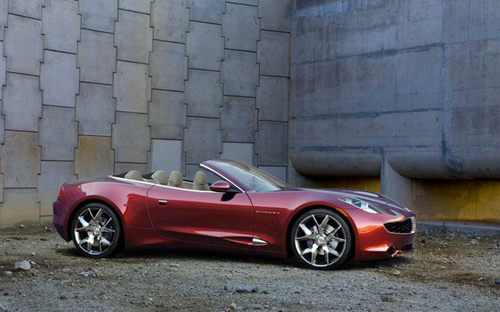
above: The Karma S — for Sunset — concept that debuted at the Detroit auto show shares its gas-electric drivetrain with the Karma sedan but wraps it in an even sleeker two-door body that could see production within two years.
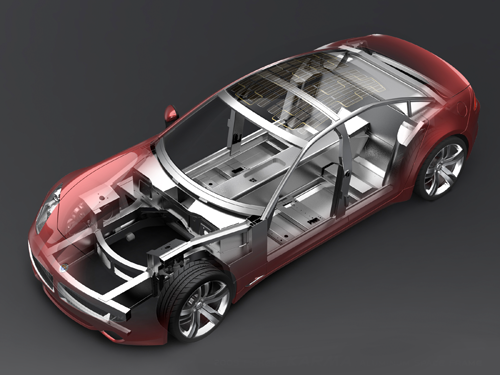
above: A rooftop solar panel on the sedan comprised of 80 cells divided into four zones. Output is 130 watts, and it helps charge the battery and, when the car is parked, keep the interior cool.
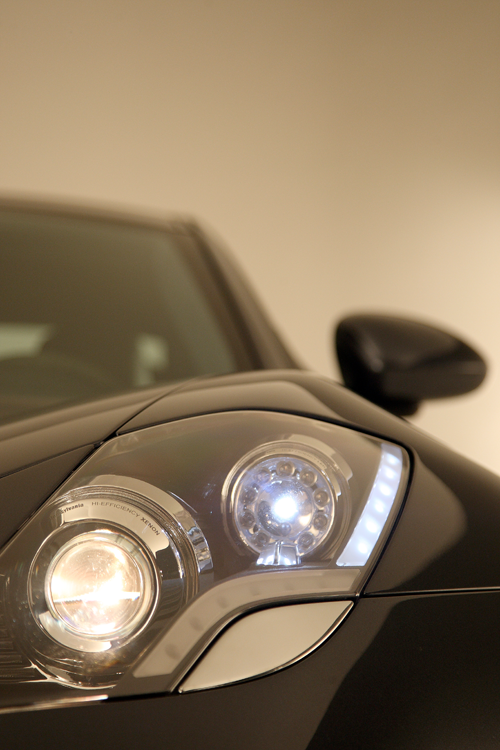
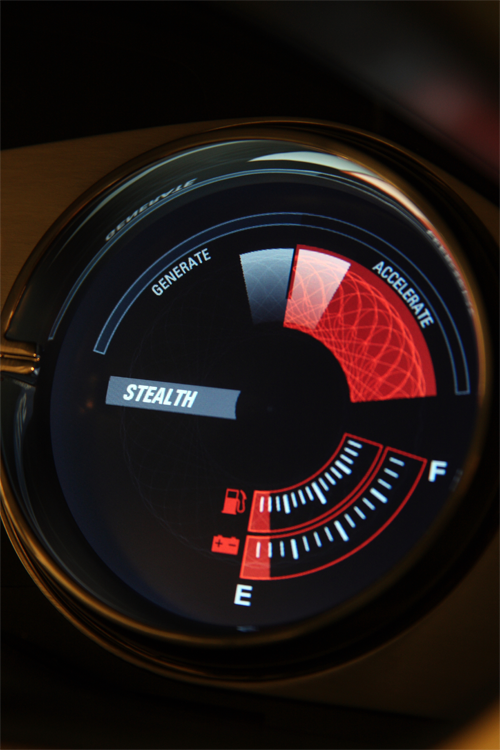
“The Karma’s material philosophy balances sensuality and accountability,” Fisker says. “We have gone to great lengths to use only environmentally conscious, classic automotive materials that support a commitment to our eco initiatives.”
Under the skin, the 4-door and 2-door cars use the same gas-electric drivetrain, which Fisker calls Q-Drive, developed with help from Quantum Technologies. The Karma will work much like the Chevrolet Volt, delivering 50 miles of all-electric range before the 2.0-liter turbocharged four-cylinder engine kicks in to drive a generator that will recharge the 22.6-kilowatt-hour lithium-ion battery and provide juice to keep the car moving. A rooftop solar panel on the sedan comprised of 80 cells divided into four zones. Output is 130 watts, and it helps charge the battery and, when the car is parked, keep the interior cool. Toyota’s got something similar on the 2010 Prius it unveiled a few hours before the Karma S broke cover.
Beneath the car’s aluminum-and-composite body lies an aluminum spaceframe chassis that cradles two electric motors that together produce 300 kW (408 horsepower) and a stunning 959 foot-pounds of torque. Fisker claims the sedan, which weighs 4,650 pounds, will do zero to 60 in 5.8 seconds. Top speed is limited to 125 mph.
Although the Karma’s electric drivetrain is a proprietary system designed in conjunction with Quantum Technologies, the engine, air-conditioning system, steering column and other “bits and baubles” were pulled from the GM parts bin, says Fisker spokesman Russell Datz.
Fisker may be getting help from GM, but, like Tesla Motors, he’s bringing a new business model to the auto industry.
His company isn’t financed by stockholders or government loans, but by venture capitalists, including the powerhouse firm of Kleiner, Perkins Caufield & Byers. It is outsourcing much of the work to top-tier suppliers like Edag Engineering and Magna Intier, and the cars will be assembled by Valmet, the Finnish firm that builds cars for Porsche. Fisker Automotive bought a big share of Advanced Lithium Power, so it’s got a battery supplier lined up.
Still, Fisker still has to get its car certified by the feds — an arduous task that some industry insiders doubt it will complete before the end of the year, particularly since we haven’t seen running cars. It also has to establish a dealer network, but Fisker says 40 dealers will be up-and-running by year’s end. Some seasoned industry watchers say Fisker undoubtedly will get his cars built, but they aren’t betting he’ll do it by the end of the year.
The convertible added just 15 percent to the cost of building the sedan, which carries a retail price starting at $87,900. Another $18,599 gets you the “Eco-Chic” model, which has an interior free of all animal products, with woodwork made from submerged logs (no clearcutting required).
Fisker says he’s received orders for 1,300 vehicles, and he tells The New York Times his company would turn a profit if it sold 4,000 cars annually. The goal, he says, is to sell 15,000 worldwide each year.
Specification:
All electric with range extender (Q-Drive)
Dual mode option: power mode and stealth mode
0-60: under 6 seconds
Top speed: 125 mph
4-door
22 inch wheels
Producer: Karma by Fiskar
Caparo T1. Street racer.
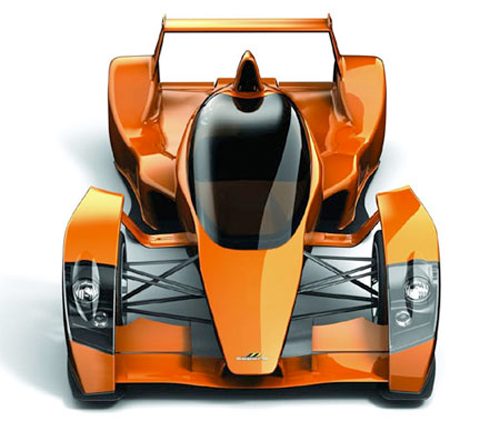
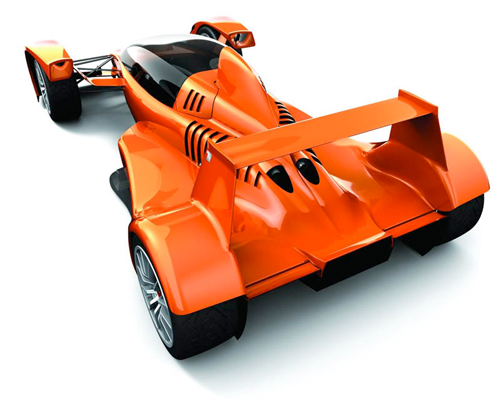
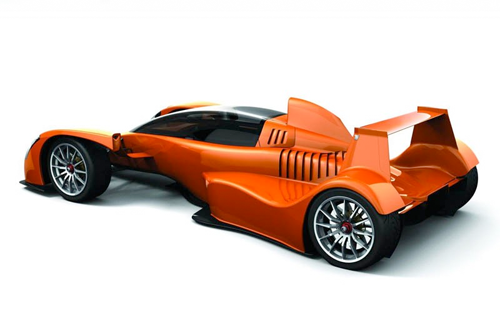
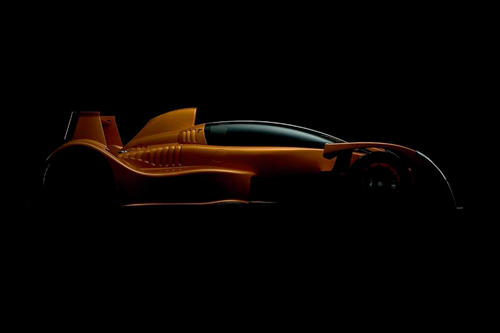
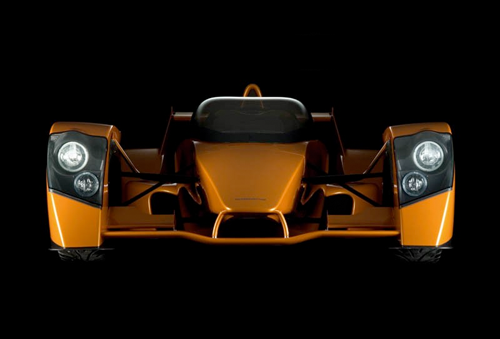
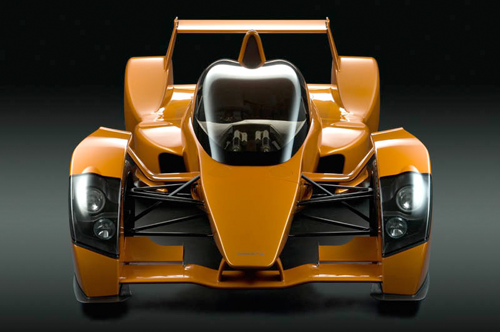
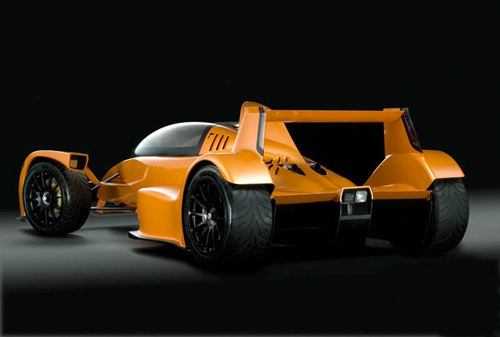

The Caparo T1 was in the press back in 2006. But now it is now production ready.
It’s as close as you’ll ever get to a genuine race car for the road. It’s been designed by a bunch of former McLaren Formula One engineers, and concedes only as much to practicality as is strictly necessary to make it street legal…maybe. Unveiled at the London Salon Privé at the prestigious Hurlingham Club, where final details on pricing, availability and a new sales and service network are expected to be announced shortly. Or go directly to the Caparo website.
Producer: Caparo
Corn Ethanol F*#k That.
Jon Stewart: “Corn Ethanol F*#k That” – 2 Billion Cars Author Daniel Sperling via ecowonk [PR]
Porsche museum.
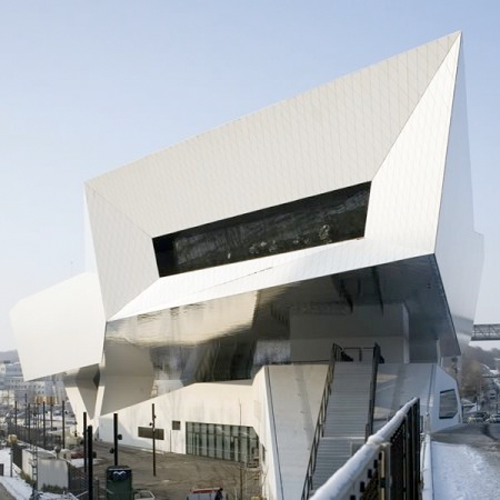
Vienna architects Delugan Meissl have completed work on the new Porsche Museum in Stuttgart-Zuffenhausen, Germany. The museum opens January 31, 2009.
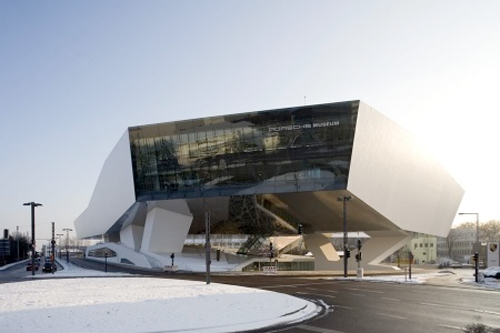
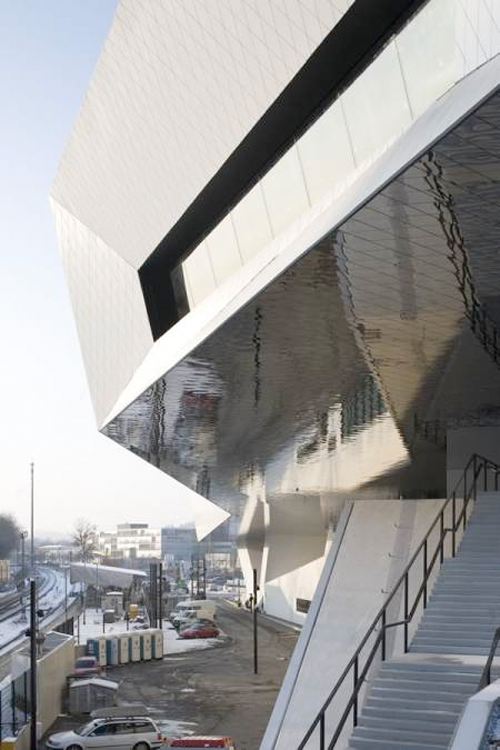

The museum will house around 80 chronologically-arranged vehicle exhibits and will be routinely replaced by other historical Porsches, as the majority of the exhibits can be driven on the road.

The company’s production and media archives will also be housed on-site, alongside a 3000-book library, shop, restaurant and conference facilities.

Photos are courtesy of Nathan Willock.
The following is from Porsche…
The Idea
The successful record of Stuttgart’s sports-car manufacturer – Porsche is both the smallest independent German automaker and the world’s most profitable automaker – is based on decades of experience in automotive manufacturing and in motorsports. The history of Porsche sports cars begins in 1948 with the legendary Type 356 “No. 1,” but the conceptual basis of the brand is the result of the lifelong work of Professor Ferdinand Porsche (1875–1951), which was continued by his son Ferry (1909–1998).
By establishing an independent engineering office in Stuttgart in 1931, Ferdinand Porsche laid the foundations for the House of Porsche, and he made automotive history by pioneering developments for his client companies. During the past six decades, Porsche has experienced many high points as well as low ones. But thanks to efficient production methods, distinctive positioning of its brand, and innovative models such as the 356, 911, 914, 924, 944, 928, and the Boxster and the Cayenne, the former sports-car specialist has developed into one of the world’s most successful automobile manufacturers.
This unique history is both an honor and an obligation. Porsche customers, shareholders, and Porsche fans had often expressed their wish for an inspiring place in which to display the corporate history, and in July 2004 Porsche’s Management Board responded by approving the construction of a new museum at Zuffenhausen’s Porscheplatz. Since October 2005, construction has been underway on a museum that will be an architectural emblem of the Porsche brand and make history as the most spectacular building project ever undertaken by the company. The elaborate new museum will be completed near the end of 2008 and will become the central repository where the Porsche tradition will be preserved and displayed.
The Location
Auto fans around the world know that the traditional site of Porsche AG is in Stuttgart-Zuffenhausen. Seventy years ago the erstwhile Porsche engineering office relocated from downtown Stuttgart to the first, newly built Porsche plant in Zuffenhausen. This is where the trial series of what became the “VW Beetle” was built in 1938, as was the forefather of all Porsche sports cars, the Type 64 “Berlin–Rome Car,” in 1939.
In 1950 this Stuttgart suburb became the birthplace of the sports cars bearing the Porsche logo. Today, the 911 model series and all Porsche engines are produced in Zuffenhausen. And Porsche’s new museum will be located here, on Porscheplatz. At this historic location, it will join the Porsche plant and the Porsche Center as the new emblem of the company.
The Architecture
There’s no doubt about it, even now: the new edifice by Vienna’s Delugan Meissl is an eye-catcher. Although the building isn’t quite finished yet, the fascinating impact of the monolithic, virtually floating exhibition hall can already be felt. This bold and dynamic architecture reflects the company’s philosophy and provides a foretaste of the experience that awaits visitors to the future museum. It is designed to convey a sense of arrival and approachability, and to guide the visitors smoothly from the basement level into the superstructure.
In their design, the architects at Delugan Meissl set out to create a place of sensuous experience that reflects the authenticity of Porsche products and services as well as the company’s character, while also reshaping Porscheplatz with an unmistakable appearance.
The Exhibits
About 80 vehicles and many small exhibits will be on display at the new Porsche Museum in a unique ambience. In addition to world-famous, iconic vehicles such as the 356, 550, 911, and 917, the exhibits include some of the outstanding technical achievements of Professor Ferdinand Porsche from the early 20th century. Even then, the name of Porsche stood for the commitment never to be satisfied with a technical solution that fails to fully meet or exceed all of its requirements, including opportunities for further improvement.
From the lobby, visitors ascend a spectacular ramp to the entrance of the spacious exhibition area, where they can gain an initial overview of the impressive collection.
Here the visitor is free to choose whether to start chronologically with the company history before 1948, or to head directly into the main area of the exhibition, which contains a chronological history of Porsche products and thematic islands. Both areas are interlinked by the “Porsche Idea” section, which forms the backbone of the exhibition.
The Idea section explains what makes the various themes and exhibits so unique. It tells of the spirit and the passion that motivate the work at Porsche, and pays tribute to the company as well as the people behind the product.
Concept
The new museum enlightens the visitor in an impressive, clear, and interesting manner about the entire history of what is now Dr. Ing. h.c. F. Porsche AG. Production cars have been just as important to the name recognition of the Porsche brand as many vehicles designed specifically for racing. Porsche designs have had an impact on individual mobility even in the early years of motorization.
The exhibition layout provides separate exhibit areas for the two periods before and after 1948. “Porsche Idea,” “Product History,” and “Thematic Islands” are the three core elements of the museum concept. Visitors making their way through the exhibition will often find these three main elements thematically interlinked.
The “Porsche Idea“ section focuses on specific, trailblazing technical solutions for interesting challenges from nearly all areas of mobility. Visitors can learn about the values, motivation, and philosophy driving the company throughout its history and to its ultimate success.
The “Product History” section is a chronologically arranged presentation of the history of Porsche sports cars from its beginnings in 1948 to the latest models with all their technological diversity and stylistic individuality.
“Thematic Islands” focus on particular, especially important aspects of Porsche history. Some of them, like “Evolution 911,” are dedicated to specific model series. Others bring together vehicles from different eras, for example in the splendid motorsport history of “Le Mans.”
The Racing Cars
Unlike many other museums, the new Porsche Museum stands for joie de vivre and variety. It will continue to remain committed to the long-established philosophy of the “Museum on Wheels” and will utilize, enhance, and expand the newly assembled collection in Zuffenhausen.
Next year, for instance, the 550 A Spyder will participate in the Mille Miglia, and the 356 Carrera Abarth GT will travel all the way to Australia for the Classic Adelaide.
Instead of a conventional, static exhibition, newly arranged object combinations will create an ever-changing display that reflects the self-image of a company that incorporates both a great tradition and great innovations.
With the “Museum on Wheels” Porsche is taking a route no one else has traveled. Even the classic vehicles in the museum’s collection are serving the purpose for which they were built in the first place: driving!
The Porsche Archive
A central repository is being created in the new museum where all of the historical and contemporary knowledge about the subject “Porsche” is being consolidated. The historical archive of Porsche AG is also moving into the new edifice, where portions of it are visible through glass walls from the lobby.
As the company’s “memory,” the Porsche Archive collects all important information concerning business, technical, social, or cultural matters relating to Porsche AG and its subsidiary companies. The archived items include anything worth saving about the unparalleled Porsche success story, from the beginnings of Ferdinand Porsche as an automobile designer to the engineering office established in 1931 all the way to today’s Porsche AG. The present files of the Porsche Archive cover 2,000 meters of shelf space, including bookshelves, display cases, steel cabinets, and safes.
The Historical Archive with its accumulated knowledge is available not only to internal departments but also to external users, such as journalists and scientists. Many thousands of inquiries annually are handled here in a professional manner by the Porsche archivists.
Designer: Delugan Meissl
Producer: Porsche
via dezeen
ThisWay bicycle.
Description:
A comfortable pedal powered bicycle with weather protection.
Emphasis is made on automotive qualities in the design, to attract non-previous cyclists used to cars and motorcycles.
Another selling point to attract more people riding a bike (particularly here in Europe) is weather protection – ThisWay has a roof.
Built in composite materials (carbon or flax fiber) and some hydro-formed aluminum, this vehicle is very lightweight (approximately 11-12kg). It has built-in LED lights front and rear, powered by a rechargeable battery obtaining its power from roof mounted solar cells. For minimum maintenance ThisWay’s built-in belt drive is well protected and all cables are hidden within the frame.
The car-like ergonomics offers a riding position lower than a traditional bike to keep a low center of gravity and optimal aerodynamics.
The design has simple controls for ease of use; single hand brake lever and hub gears type Torpedo Duomatic providing Low and Hi gear.
The rear of the frame has a “luggage connector”, where the user plugs-in his/her luggage (e g briefcase, helmet box or rack for shopping bags). The design also benefits from flexibility and comfort for riders of different sizes, as the crankset and seat is adjustable in length/height.
A “hybrid” version (pedal power/electric motor) is possible and additional battery pack plugged-in into the luggage connector will extend the range further.
Although this design is more expensive to manufacture compared to its traditional rivals, it is still just a fraction of the price of a car and virtually zero in running costs…
Motivation:
There are roofed bikes out there on the market already such as rickshaws, recumbents, HPVs (Human Powered Vehicles)/velomobiles etc., so covered bikes do exist since a long time but the challenge is to design a functional and desirable bicycle that even appeals to non-previous cyclists.
It makes sense for a commuter bike here in Central and Northern Europe to offer some degree of weather protection for improved comfort. Instead of creating a totally enclosed design similar to other HPVs/velomobiles risking the user to feel isolated, a more open design will allow a higher degree of interaction with the surroundings.
Winner Bicycle Design “commuter bike for masses” design competition. See the Bicycle Design list of finalists .
Designer: Torkel Dohmers
WHAT DO YOU THINK OF THIS CONCEPT? — comment below.
Mini E. Test drivers wanted.



MINI announced that they’ll be giving up to 500 test drivers the opportunity to test drive the new no-carbon footprint electric MINI E before it’s released.
The diminutive 3-door MINI E is powered by a 100% electric motor (hybrids are for wusses), and still manages to go from 0 to 62 mph (100 km/h) in about 8.5 seconds. While a top speed of 95 mph (152 km/h) isn’t going to break any world records, it’s plenty for anyone who doesn’t spend much time on the autobahn or the race track.
The car gets its juice from over 5,000 individual power cells, joined together to form a single composite battery. At peak, the motor can crank out 204-horsepower and 162 ft/lb of torque – not too shabby for an electric car.
With a cruising range of 150 miles (approx. 240 km), the MINI E should be fine for heading back and forth to the office, grocery, or any other short haul local destination.
If you live in Southern California, New York City or New Jersey, you could be selected to be one of the lucky early test drivers. For your chance to test out the new MINI E, head on over to MINI Space and fill out the form for more information on applying.
Producer: Mini





